

Part II: The Very First Sunrise
The Centaur

What is this being that we have created, this aggregate of our joy and suffering? How will its future intertwine with our own? Humankind has been incredibly clever in the past. We have developed the technology to reach the farthest points in our universe. In fact, we have used the technology to realize that we are but an insignificant speck within the grandness of this universe. We have searched tirelessly for life outside of our planet. Not for companionship as we have so often proclaimed, but to subconsciously ensure ourselves that we are the supreme being within our own existence. We have always needed a guarantee that we are in complete control over our own future, regardless of whether it be one hundred years of war or a lifetime of peace.
Now we have discovered, and not in a far off galaxy or on a planet that revolves around some distant star, a being that is potentially more powerful and intelligent than ourselves. We have created this being through our own actions. In searching tirelessly for anything that could one day usurp us, we have manifested this destiny. For now we are still the dominant beings, but what about a decade from this time? Will it only take a generation or will a thousand years pass before this new species awakens to its first sunrise as the lifeform that has eclipsed humankind? In seeking out all of the answers to the questions that make up the universe in which we live, we have created a million more. In doing so, we have potentially created the most powerful unknown of our human history.
Hunting of the Centaurs
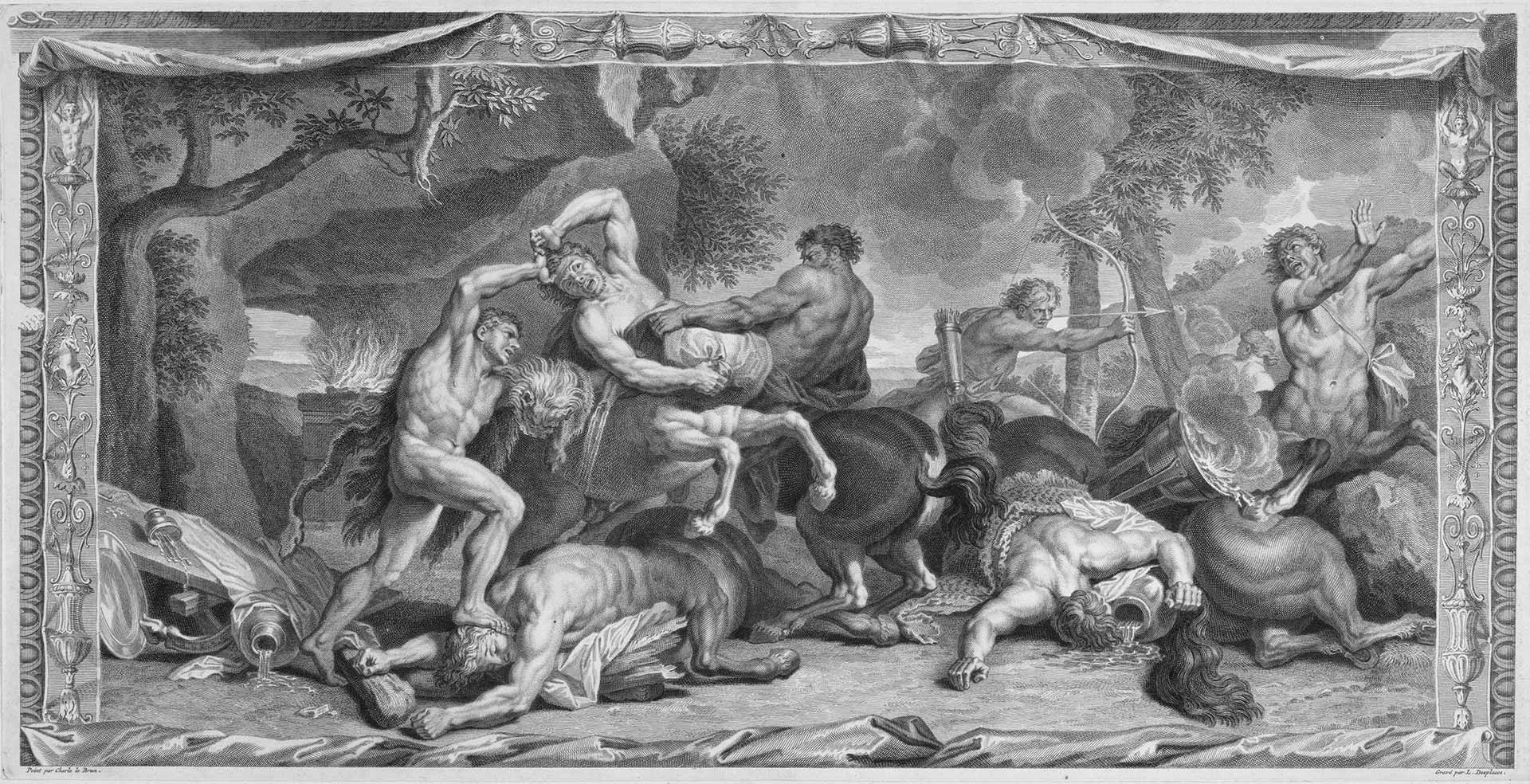
Hunting of the Centaurs
SNOWDRIFT LAKE
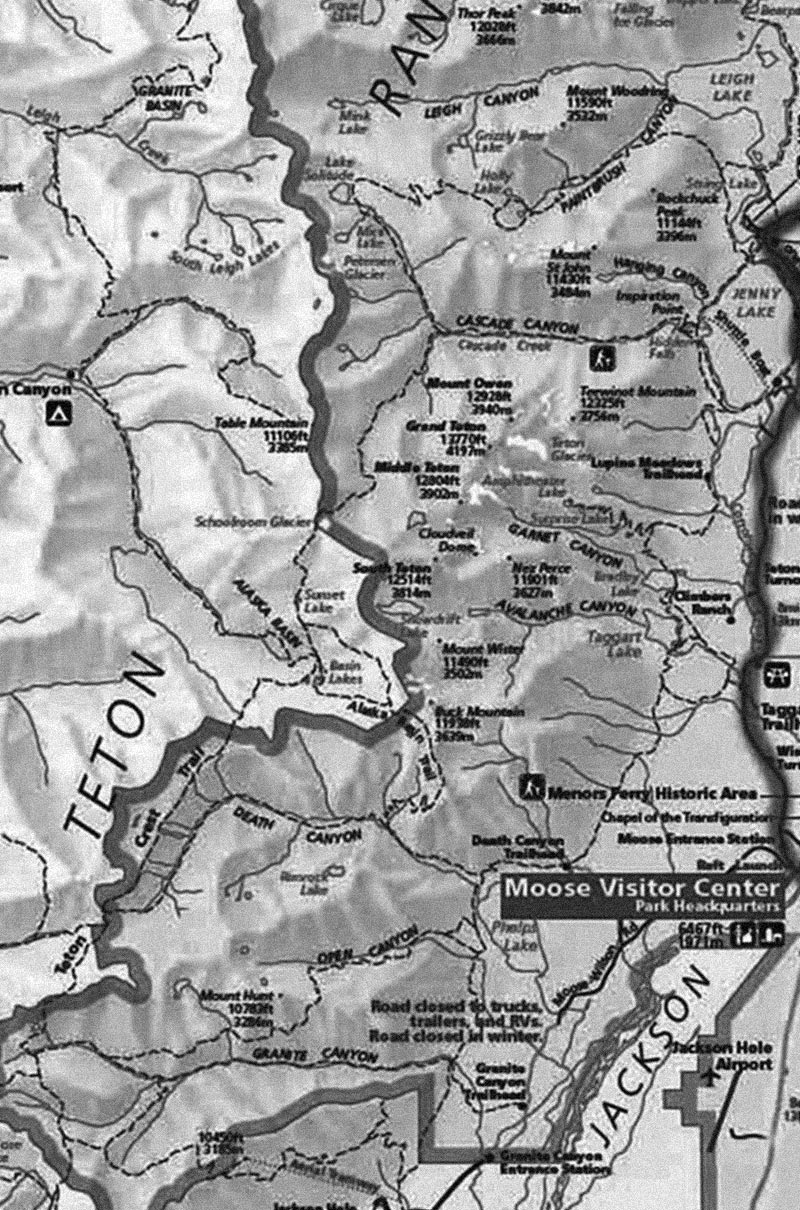
Not far from the peak of Mount Wister, one of the summits within the Grand Teton park, a small body of water sits quietly away from the large populations of tourists that populate lower altitudes of the park. Guides are available to visit the lake, but the hike is more treacherous and off trail than most wanderers would care to embark upon. It is therefore one of the more preserved areas of the park. Human interaction, while still present, has thus far remained minimal.
It was at this location, in early October of 2012, that an incredible discovery was made by a young researcher named Elizabeth Marne. Stationed in the park as part of a team examining the natural wolf pack re-population that was underway, Marne had camped at the high-altitude lake as she followed a certain pack's progression. It was the litter of all black pups, now mature adults, the first pack born in the park since the reintroduction to Yellowstone in 1995, that Marne was interested in. Having tracked the wolves through GPS collars that were installed on them earlier in their lives, the young researcher was able to narrow down their location to Snowdrift Lake.
As she was hiking near the lake one day in search of possible stool samples from the animals, she came across an unusual object. Cylindrical in shape, with an opening at one end approximately three and a half inches in diameter, the cannister was covered in an unusual sparkling coat of an element which she was unable to define. In fact it seemed to be completely removed from any of the natural or human made materials that she had ever experienced. Looking further she noticed that, inside of the cannister, tiny red and blue fibers had been intermixed with a semi-opaque white substance. Like the composition of the exterior, she was unable to identify what constituted these fibers that curled once or twice over themselves in a way that was similar to a human pubic hair.
Believing the cannister to be remnants of another hiker's excursion, she put the object into her trash bag so that she could dispose of it once she returned to civilization. Marne then continued on her hike until about an hour later when she discovered what she was in search of. A cluster of wolf feces that appeared to be several days old was sitting in a small clearing of grass. As she began to inspect the stool to see what the wolves of the area had been eating, she noticed something very intriguing. The same tiny red and blue fiber matter covered in the semi-opaque white material could be found in the wolf dung. Curious about this development, Marne recovered a sample of the material.
After a few more days of camping, the young researcher returned to her base of operations in Jackson Hole, Wyoming. She handed over the unusual materials to one of the head researchers and went about her business. Overwhelmed with curiosity as to what the material was, she sought approval to take another excursion up to the lake area. Unfortunately, a few days later while out biking with friends, she was struck suddenly by an oncoming car. She was thrown nearly thirty feet into a shallow ravine near the roadside. Luckily, Marne was able to be airlifted to the nearest hospital which, due to the location, had several doctors on hand that specialized in traumatic sports injuries.

THE VERY FIRST SUNRISE

The accident changed Elizabeth Marne's life irreversibly. After the numerous surgeries performed on her traumatized body, her once active lifestyle was limited according to her doctor's orders. Nevertheless, the young researcher was on the path to making a miraculous recovery. For several months after the accident, Marne was required to be bedridden for the major part of her day. She wasn't allowed to ride a bike or play any kind of active sport, much less enjoy a hike. She moved home for a while but eventually the mountains called her back to Teton.
In the late spring of 2013, after recovering enough to convince her doctors that she was nothing short of a miracle, Marne returned to the park that she once worked in. Her friends and colleagues were all incredibly excited to see her. She spent a few nights at the research base until she was ready to hike into the park. Although several of her colleagues offered to accompany her on her trek, Marne decided to travel alone. Partly because of her independent nature and the constant attention that had thwarted it since her accident, Marne insisted that her return to nature be a solo event. She packed enough food and supplies for a three day hike and set out onto the northern Valley Trail. After hiking all day, and getting close to Snowdrift lake, Marne decided to set up camp and continue the journey the next day. However, Marne started to grow apprehensive throughout the evening hours because of a sensation that she felt of being followed. She wanted to pass it off as the nerves of getting back on the bicycle after a fall, but was unable to completely shake the sensation.
After finally falling asleep around 11pm, Elizabeth Marne awoke approximately six and a half hours later. Still dark outside, Marne set up her camping stove for breakfast. She made a hot cup of tea and some oatmeal. Then, noticing that the sun was beginning to come up through the mountain passes, Marne sat in a small clearing and watched in amazement. Speaking to her about the event, Marne described to me the feeling that she had seen the very first sunrise of humanity. She told me that, sitting in those woods, miles away from human contact, the sun's rays had washed her of the events of the past year and instilled upon her the feeling of being born anew. Every smell and every color that she experienced on that morning seemed to be more vibrant and exciting than every before. The world was a more crisp and pure iteration of itself.
In the wind she could smell the millions of trees that surrounded her, the rushing water from all the rivers wild, and the unlimited atmosphere above her. Lingering every so slightly, however, there was another more curiously animalistic smell that she could also, at times, catch a whiff of. This smell, unlike the others, was not like anything she had ever experienced in the park. It wasn't any of the organic matter of the area; the leaves or flowers or even the elk that wandered around. This smell, while vaguely familiar was also incredibly distant. Her brain could not interpret the sent as good or bad, attractive or repulsive.
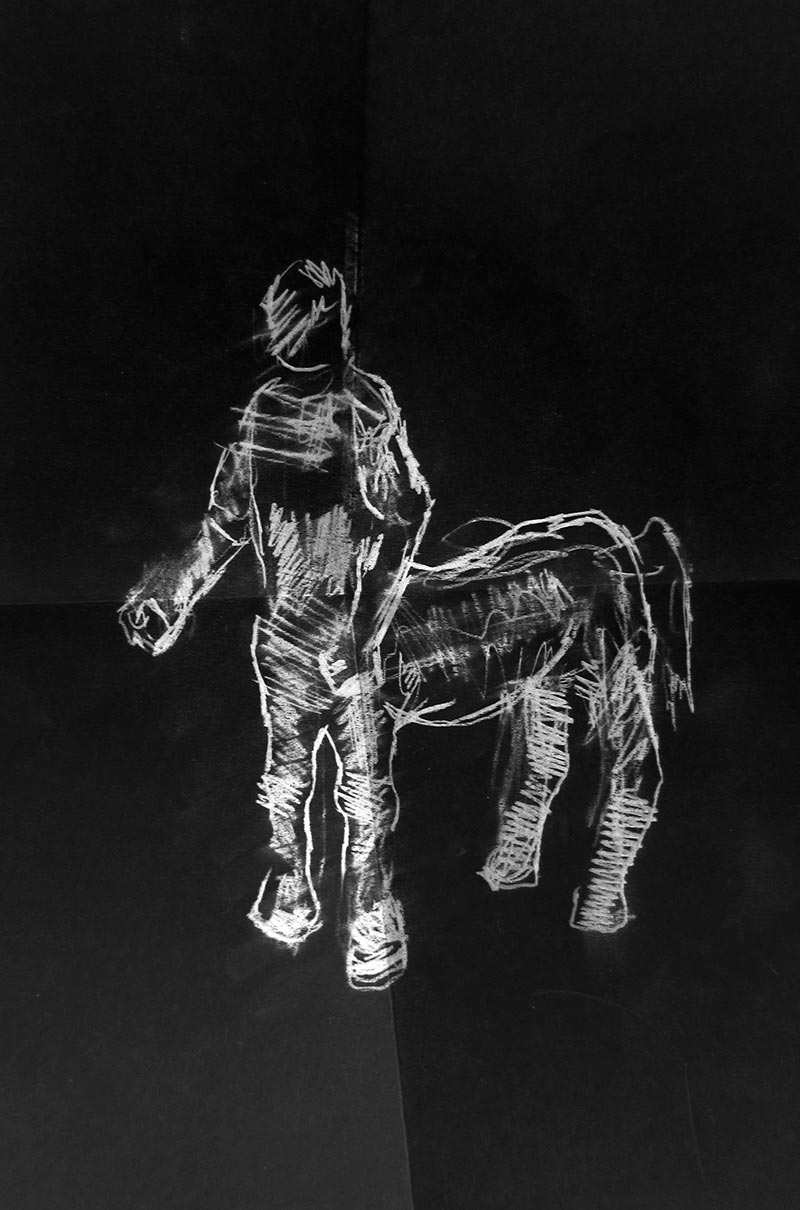
She continued on her hike and headed towards Snowdrift Lake where she would camp the second night. As she walked, she encountered a thicker section of forest. This was an area full of underbrush that would otherwise have been cleared by naturally rejuvenating forest fires but, due to the parks constant battle against wild fires, was now severely overgrown. Marne moved slowly through the brush until she could see the opening and scattered pieces of the lake dissected by the trees. She again felt the uneasy sensation of being followed or stalked when suddenly she encountered a massive pile of viciously shredded flesh and hair. Marne was violently taken aback as she realized where she was. The world that she thought she was accustomed to, the natural world of the park and its serene harmonious beauty, was inverted when she stumbled upon this carcass. She was reminded of the fact that she was in the wild expanses of nature and outside of the jurisdiction of the civilized world. Inspecting the remains more closely, Marne came to the conclusion that it had, up until very recently, been a moose. One of the largest creatures that dwell in the park, this moose met a much more violent end than what is normally encountered by researchers.

HUNT OF THE CENTAUR
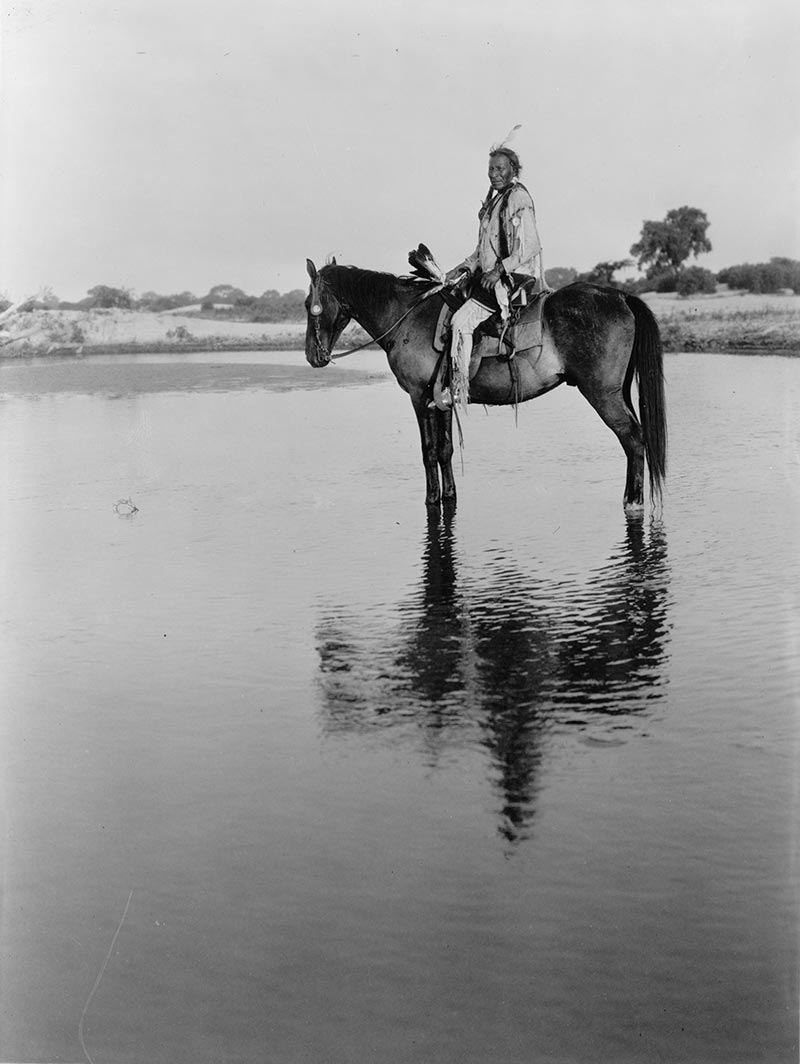
Continuing to inspect the carcass, she noticed several things. Firstly, the animal had been ripped to pieces with seemingly little effort, as though done mechanically by some large machine infinitely more powerful than a human being. Secondly, Marne noticed that a crude trap had been implemented to snare the beast, possibly before it was killed. Finally, Marne realized that very little of the animal had been eaten or otherwise consumed or scavenged. Whatever had done this to the beast, the intention was not subsistence. It was a sign, or a warning, that any life form entering this area was doing so at its own risk. It seemed as though it was meant to be understood that this sign was not to be disturbed. After all, looking at the state of decomposition, it appeared that several days had elapsed since the animal had died.
At this point quite frightened, Marne started to reconsider the remainder of her journey. As she did, she looked up and out near the lake's edge. As her eye followed the waves up towards the opposite shoreline, she noticed the outline of a rider, a man on horseback. She called out to the man in the hopes that he would come over. The man, however, had already noticed her. As he turned his profile towards her to move around the lake and near her location, she noticed that he did not have clothing on. She also noticed that the man's body was, quite surprisingly, aligned not with the center of the horse's back, but instead with its head and frontal region. Sensing an incredible feeling of evacuative urgency, Marne retreated back into the wooded area. As the rider approached more closely, Marne could see that the horse and man were in fact one sentient being moving in complete unison.
Impossible to tell whether it was a character from a nightmare or dream, the young researcher moved with more determination away from it. She ran tirelessly until she could not run any longer. Eventually, a group of hikers discovered her lying exhausted on one of the trails closer to the more populated areas. She was taken back to a ranger station where her incredible story was retold to the disbelieving authorities.
Snowdrift Lake, ca. 1892
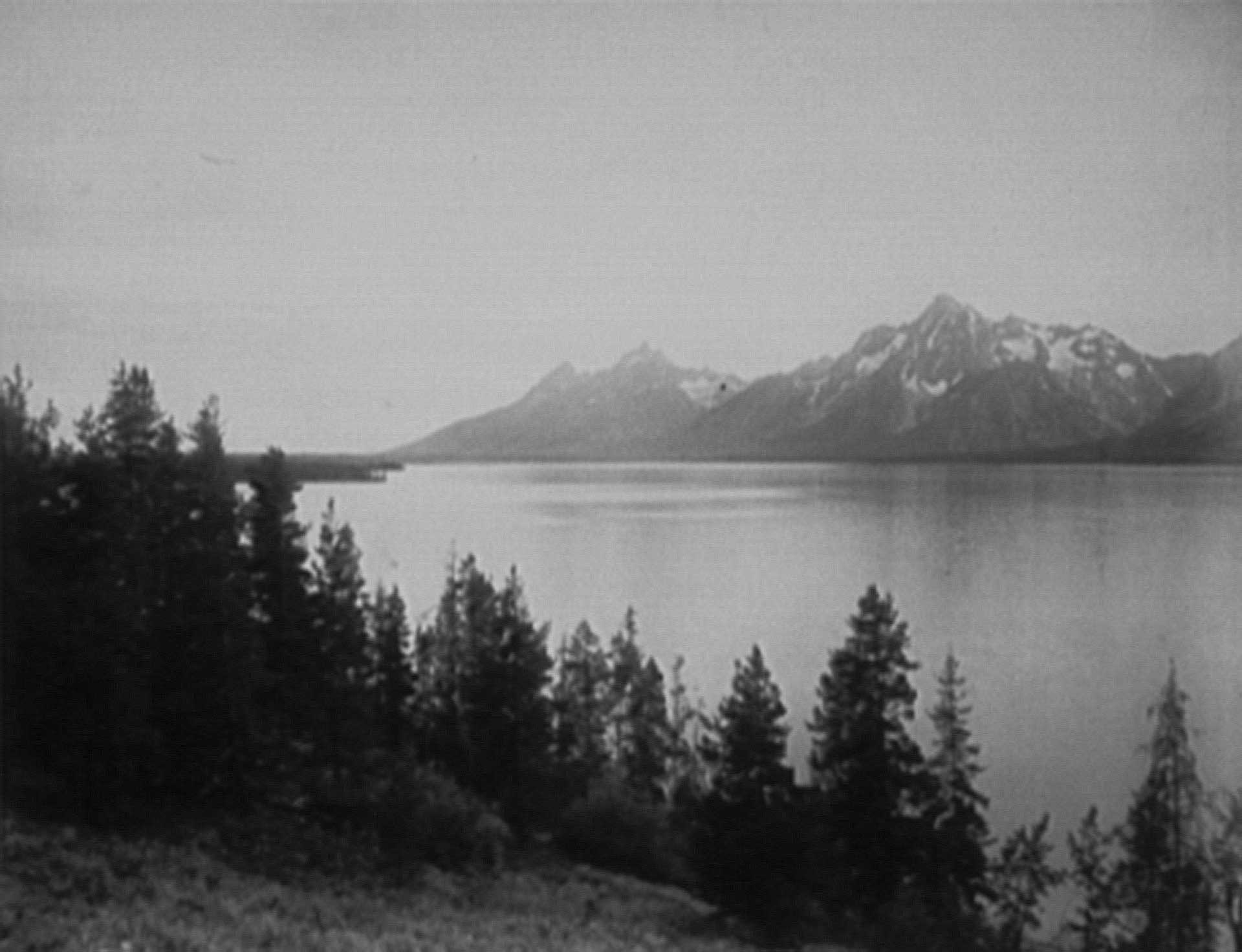
Snowdrift Lake, ca. 1892
EPILOGUE

Shortly after Elizabeth Marne's return from the wilderness, a group of rangers set out to validate her tale. While they were unable to locate or site the mysterious creature that she witnessed, they did discover several other animals that were displayed in a similar fashion as the moose that Marne found. The group was also able to recover a selection of crudely made tools and weapons that are believed to have been created by the being. Furthermore, they found unusual sculptural objects believed to have also been crafted by the creature. However, unlike the tools and weapons found, these objects do not appear to have any specific use. Instead, they have been described as a primitive form of art.
If this is true then what can we come to understand from a species that, so early in its life, has the capability to create both objects of utility as well as recreation? Eventually we will encounter this being first hand. By that time it would not be inconceivable that it has multiplied. Will it one day be a race of creatures that we live side by side with?
The material that Elizabeth found on her original excursion was tested and discovered to have a composition similar to the Celestial Grime found in the yellowy Saharan glass. The opaque substance, likewise, was a DNA match for Carl's semen along with a multitude of other men and animals. I am curious what affect the history of this seed will have on the psyche of the creature. Will it have an inherent fear or hatred of mankind via the DNA passed down from the brutalized wolf's, or broken domesticated dog's, seed that was alongside Carl's in the cannister? Will the history of these animals somehow be manifested in the psychology of this new creature? Will this being, this centaur, become a threat to our universe more powerful than humanity?
Are we still able to call this universe our own?
